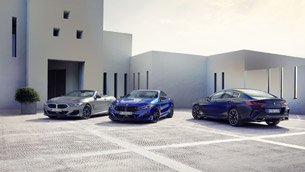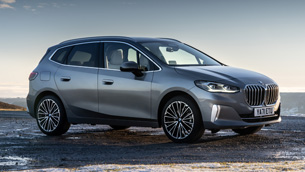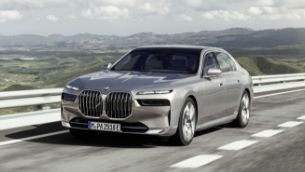BMW iDrive: The Original Sets New Standards
Second generation of BMW's innovative control concept even more intuitive and easier to use after intense development and testing. Already featured throughout the BMW model range from the 1 to the 7 Series. Munich. Everything in view. Everything under control.
Proceeding from this clear-cut principle, BMW presented the innovative iDrive control concept back in 2001, becoming the world's first car maker to offer a system allowing the user to mastermind essential vehicle, entertainment, navigation and telecommunication functions via a central Controller on the centre console and a multifunctional Control Display in the instrument panel, in this way replacing a wide range of conventional switches, buttons and displays.
Now, seven years later, BMW proudly presents the second generation of BMW iDrive. The superiority of this thoroughly new system compared with comparable copies introduced in the meantime by the competition is the result of a consistent development BMW started back in 2002 just one year after launching the first generation of iDrive and is based not only on research know-how in the areas of ergonomics and perception studies, but also on the results of empirical analyses and practical tests naturally embracing customers the world over.
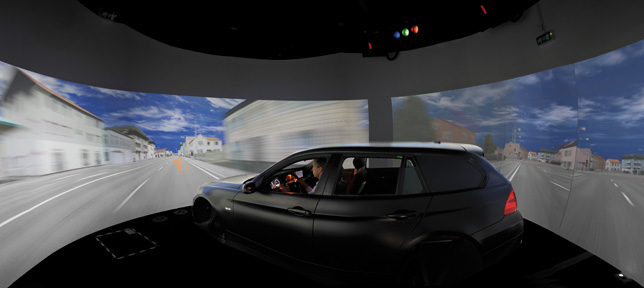
Unique: BMW iDrive as the ideal solution from the compact car all the way to the luxury class. The basic principle of BMW iDrive to separate the control unit and the display from one another has been adopted in the meantime by other premium car makers. But the original still sets the standard - particularly after the introduction of the new generation of BMW iDrive presented in autumn 2008 in the new BMW 7 Series and the new BMW 3 Series.
At the same time BMW's new iDrive is now entering the market in the BMW 6 Series, the BMW 5 Series, and the BMW 1 Series. No other manufacturer is therefore able to offer such a convincing, uniform control concept in such a large number of different vehicle segments ranging from the compact car all the way to the luxury performance saloon.
Not least, this is why BMW iDrive has long become the synonym for multifunctional display and control in the automobile. Positioned in ideal ergonomic arrangement on the centre console, the Controller is now as important to many motorists as the mouse for the user of a computer. More than two million cars with BMW iDrive have been sold since 2001.
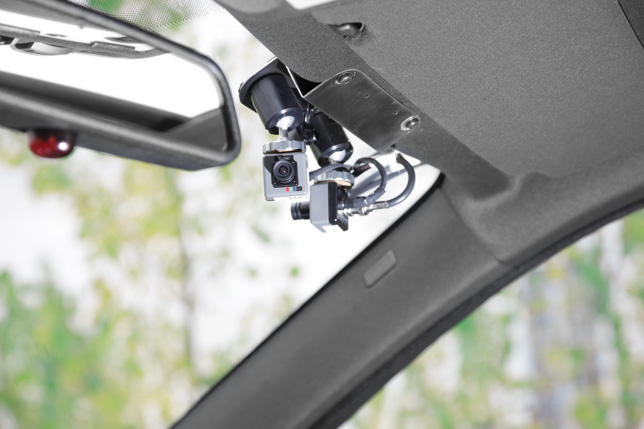
Systematic development with customer tests the world over. In the course of the development process which already started back in 2002, four possible concepts were considered for the new generation of iDrive for their user-friendliness. All phases in the development of BMW's new iDrive were furthermore accompanied by intense customer enquiries and practical tests. This involved the use of mobile driving simulators, cockpit models and two concept cars equipped with prototypes of the new system variants. An evaluation programme with a total of 500 representative test persons was furthermore conducted at four different locations in Europe, America and Asia.
The focus in these tests was to conduct various control operations in typical driving situations. One example was the process of changing lanes on the road first without performing any additional functions and subsequently while entering one's destination at the same time. This lane change test clearly showed which concept made it particularly easy for the driver to largely maintain his ideal line while using the navigation system. In the process the updated concepts were optimised until finally BMW's engineers and researchers were able to establish the best and most suitable system, the second generation of BMW iDrive.
A further highlight in examining the features and qualities of BMW's new iDrive was to optimise the time required by the user to operate the system efficiently both when trying it out the first time and when using iDrive regularly. A number of systematic comparisons quickly showed that when using BMW's new iDrive even the very first time, and particularly when using the system regularly, the user requires far less time to make himself acquainted with the control operations than with other systems offered by other manufacturers. The occlusion method also applied for making comparisons with other manufacturers and their systems provided particularly detailed information on user-friendliness, enabling BMW's engineers to determine how and under which conditions the user is able to interrupt a specific control operation.
This test clearly showed that BMW's new iDrive allows the driver to split up tasks such as selecting a specific source of music or determining his destination in the navigation system into several control steps conducted one after the other, with the driver required to take his eyes off the road only very briefly. In other words, the driver is able to complete individual operations such as navigating to his destination by means of lists or changing among various radio stations in a "blind" process, without even looking at the controls. Once again, therefore, the occlusion method confirmed the decision already taken in developing the first generation of iDrive to opt for interaction of the Controller and Control Display instead of using a touchscreen.
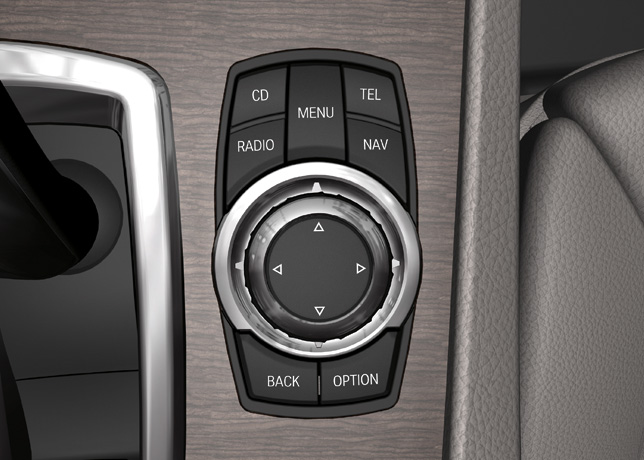
BMW's new iDrive: easy to understand, easy to memorise, clearly structured. BMW's new iDrive ideally fulfils the tasks and requirements defined in the development phase. In its design and configuration, the new Controller follows the most advanced biomechanical know-how reflected by the Controller's touch surface and clearly structured mechanical features. The individual operating steps with the Controller being tipped to the side, turned or pressed, are largely the same as the operation steps conducted by the user of a computer with his mouse. Turning the Controller, for example, the user browses through a list of individual menu items, then pressing the Controller to confirm the function chosen. Tipping the Controller to the left or right, on the other hand, the user is able to navigate through the various menu levels.
Introducing the second generation of BMW iDrive, BMW now offers a Control Display measuring either 10.2 or 8.8 inches and exceeding all existing graphic surfaces seen in an automobile so far not only in terms of its size alone. Display resolution of 1,280 x 480 pixels allows clear presentation of true-to-detail graphics with a level of brilliance and clear focus quite comparable to that of High Definition TV (HDTV).
BMW as the driving force in progress: from CARIN all the way to iDrive. Right from the start, the development of BMW iDrive was directly based on a wide range of experience already gained by BMW in the area of driver assistance and interior configuration.
As far back as in the 1990s, BMW's designers and engineers started considering how the constantly increasing number of comfort functions in the automobile might be masterminded in the safest and most efficient manner.
Up to this time the integration of a new function in the car always involved the use of additional buttons and displays in the cockpit. So back in 1994 the engineers developing the then BMW 7 Series combined the world's first navigation system in the automobile with the CARIN car information system serving as an on-board computer. Six years later the first radio system with an integrated navigation function was presented in the BMW 3 Series. And with iDrive entering the market just one year on, BMW for the first time gave the driver the wonderful option to control a wide range of different functions with one single control unit and a central display: a genuine revolution in the cockpit of the car.
Optimised control concept for even greater supremacy. Supplementing the Controller, multifunction buttons on the steering wheel gave the driver the opportunity right from the start to activate selected entertainment and telecommunication functions without having to take his hands off the steering wheel. The favourite buttons then introduced in 2007 subsequently helped to make control operations even easier and more systematic.
Now the new generation of BMW iDrive comes with no less than eight favourite buttons on the centre console, enabling the user for the first time to save not only radio stations, telephone numbers and navigation destinations, but also all menu items subsequently available for direct retrieval via iDrive.
As an additional innovation, the second generation of BMW's revolutionary control system comes with four direct selection keys on the Controller for the menu options used most frequently. Pressing these keys, therefore, the driver is able to spontaneously change among the CD, radio, telephone and navigation functions - in the same way as in entertainment electronics - particularly quickly and efficiently, again making the entire system very easy to learn and memorise.
BMW iDrive leading the development of vehicle control concepts. BMW iDrive has revolutionised the control and operation of the car significantly and with a lasting impact. And now this pioneering work is paying off once again, with BMW iDrive remaining the benchmark for all systems of this kind.
It is quite astounding to note that hardly any user of a computer knows the name of the US IT pioneer Doug Engelbart who almost 40 years ago took out a patent on the computer mouse he had developed as a genuine breakthrough in the world today. But with BMW iDrive the situation is exactly the other way round: not only BMW drivers know exactly which cars boast the unparalleled original.
